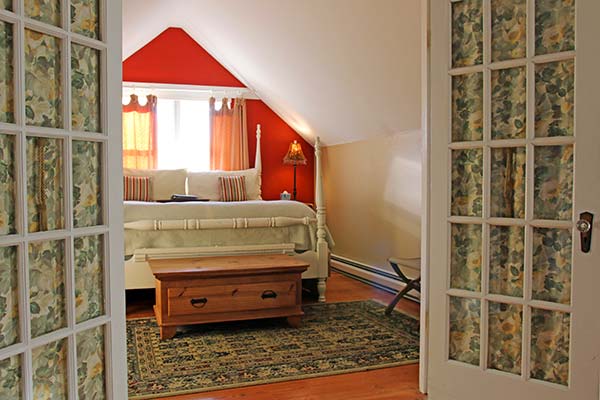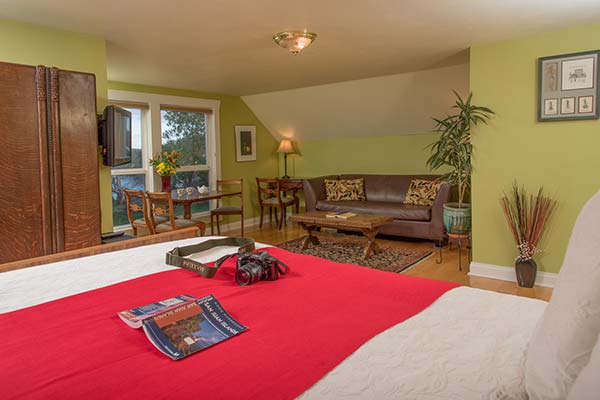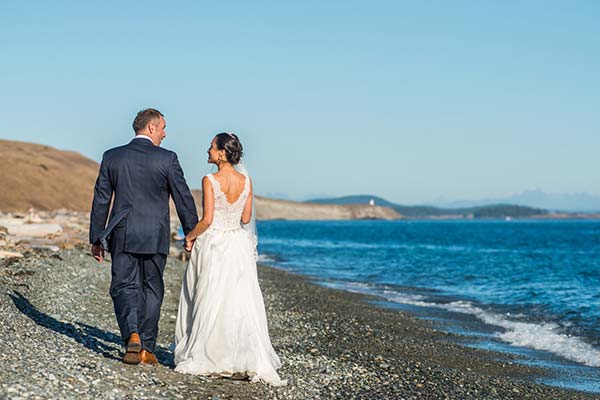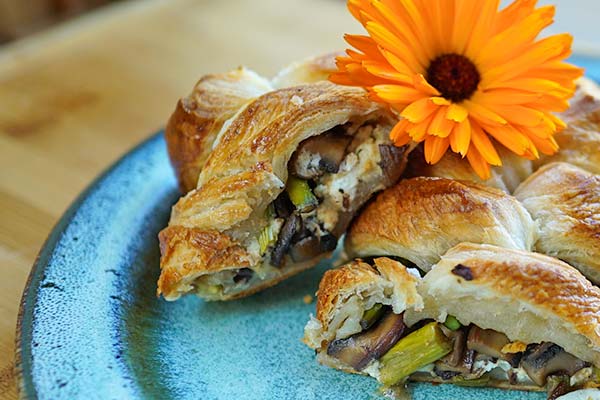Three Women: One Important Art Installation
Story and photos by Shelley Sharp
Through Monday, December 10, guests of the Tucker House Inn and Harrison House Suites will have the opportunity to take in a continuing collaborative exhibit: 2018 The Female Gaze, Part 3, by three uniquely-talented female artists: Lumi Verdugo, Nicola Wheston, and April Surgent. When you attend, please note, that this trifecta show is not to be experienced at random, but in linear order.
An Introduction to the Exhibit
As the enthusiastic museum docent, Lana, said to me as a preface to my self-guided tour of the state-of-the-art space, “You will begin in the North Gallery where you will see the work of local artist Lumi Verdugo. She has shaped the clay from the earth with her hands, and even infuses the pieces of broken pottery into her pieces so that nothing is wasted.”
“You will then experience the turmoil of the Main Gallery,” she went on with a dramatic flourish of her hands. “The work of acclaimed Salt Spring Island artist Nicola Wheston depicts our world overwhelmed with stuff!” “You will then finish your tour in the Atrium where you will see the disaster that is happening in the oceans by April Surgent .”
Lumi Verdugo: Of My Hands 1962-2018
Steeling myself for an emotional hour-long experience, I entered the gallery directly behind the reception desk. Here I gazed upon the three-dimensional works and drawings of New Mexico artist, Lumi Verdugo. Having lived in New Mexico, her framed and vessel clay pieces were instantly familiar to me. Verdugo’s technique utilizes natural oxidation and brocken pottery shards to create works that are intentionally primitive, yet expertly executed. This subtly-feminine collection displays her portfolio of over 35 years. I was especially drawn to the curving womanly water vessel “Dance” and stumpy midriff, “Torso”. This first section of the installation as a whole is the realization of our past pre-consumer lives, and it primed me for my journey ahead.
Nicola Wheston: Stuff – The Consumption
Crossing back throught the reception area and past the delightful Lana, I was met with a garishly bright self-portrait of painter Nicola Wheston. In the piece, titled, “We Become Our Things,” the artist is surrounded by heaps of cleaning supplies, clothing, food, and everyday wares. Wheston’s highly-personal visual statement is an admission to what we have all become — including herself. I turned left into the main gallery and was immediately immersed in even more “stuff”. Emphasizing the ways it overtakes the lives of everyday Americans, especially women. The paintings are huge, brightly lit, and impossible to ignore. There is a 60-ish-year-old woman, clad only in her slip, holding a roast beef dinner on a china platter.
Around her is a mess of daily life and her pets. “Sunday” showcases the isles of a big-box store and all the “stuff” we really don’t need. Junk food, toiletries, and children fill the shopping carts. Her largest work is titled, “Picnic at the Garbage Dump.” In it, two women sit on the tailgate of a pickup truck encased by (what I took to be) all the garbage that they had generated throughout their lives.
Almost ridiculous if it wasn’t so poignant, the people and vehicles are slightly askew and out of proportion. The effect is a a grave-like setting for the women who benignly eat their lunch. I noticed something in my half hour visit of Wheston’s show. In each piece, there is an item in the background that suggests a once calm uncluttered life. For example, an old-world painting of wheatfields and sky, hard-bound books hidden behind garbage, and pictures of loved ones dwarfed by plastic bottles.
April Surgent: Portrait of an Ocean
Through a cased-opening in the back wall of the main gallery lies April Surgent’s provocative installation. In her artist statement she writes, “By changing the way we consume, we can generate the positive change in marine ecosystems and preserve the remaining integrity of our oceans.” Surgent has completed two residencies where she was both budding scientist and artist: the Palmer Research Station in Antarctica and a tiny atoll island in the Hawaiian chain. Over the course of six months, the 20-something Surgent cobbled the ocean’s trash to create her impactful statement. One that visually affronts you with the havoc that plastics play in the earth’s degradation.
With sunlight from the windows of the glass Atrium Gallery, hundreds of Bic lighters gleam like a 15-foot tall stained-glass cathedral window. Both beautiful and horrifying, it is only a handful of garbage that she collected during her residencies. “In the Pacific,” she says during a taped interview at the museum, “I encountered garbage, trapped in coral, that was at least two feet in depth below the surface.”
Call to Action
Upon exiting, there is an invitation for guests to sign a pledge. It asks that when purchasing new items, to only buy those in glass, metal, or paper containers. I watched as the adults in the room passed by. But I was heartened that younger visitors stopped to sign their names.
After giving my signature, I headed upstairs, watched a 15-minute video where Verdugo, Wheston, and Surgent were all interviewed for the project. Then I made my way outside and into my consumer-based world. I found myself both highly energized and also a bit saddened by my experience. I didn’t know what to expect as a first-timer when I walked through the modern doors of the San Juan Islands Museum of Art. But upon exiting, I couldn’t help feel moved and deeply-impacted. You will too.
San Juan Island Museum of Art
Hours: 10-5; Thursday-Sunday
Adults: $10 / Children under 18, free
Website: www.sjima.org











